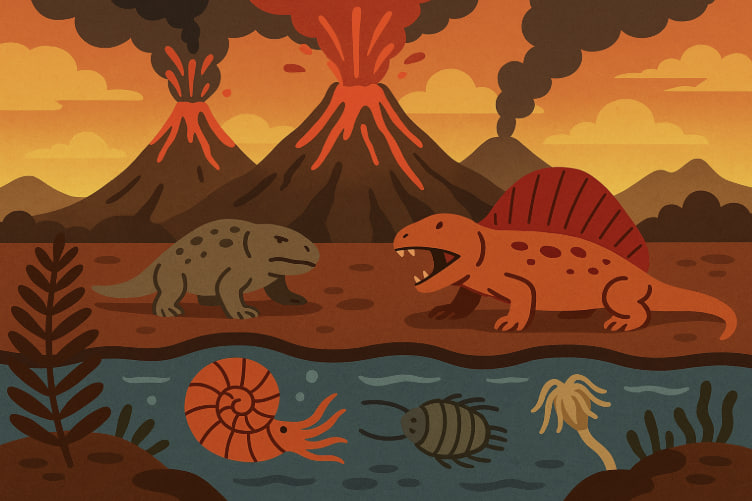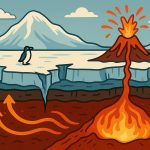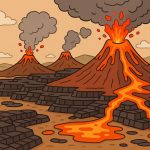The Permian extinction, also known as “The Great Dying,” was the most severe mass extinction event in Earth’s history. Occurring around 252 million years ago, it marked the end of the Permian Period and the beginning of the Triassic Period. This cataclysmic event wiped out approximately 90% of marine species and 70% of land vertebrates, reshaping the course of evolution forever.
What Was the Permian Period?
The Permian Period (298–252 million years ago) was the final chapter of the Paleozoic Era. During this time, the supercontinent Pangaea had fully formed, bringing vast deserts and extreme climate shifts. Life was diverse, including:
- Trilobites, ammonites, and coral reefs in the oceans
- Dimetrodons, therapsids (mammal ancestors), and early conifers on land
- The rise of large insects and reptiles
What Caused the Mass Extinction?
The exact cause is still debated, but scientists believe a combination of environmental catastrophes triggered the Permian extinction. Leading theories include:
1. Siberian Traps Volcanism
Massive volcanic eruptions in what is now Siberia released vast amounts of lava, ash, and greenhouse gases (especially CO₂ and methane). This caused:
- Severe global warming
- Ocean acidification
- Atmospheric toxicity
2. Methane Release
Warming may have destabilized methane hydrates in ocean sediments, releasing large quantities of methane—a potent greenhouse gas—and accelerating climate change.
3. Anoxia in Oceans
Oceans became depleted in oxygen (anoxic), killing off most marine life and collapsing the food chain.
4. Acid Rain and UV Radiation
Sulfates in the atmosphere may have led to acid rain, while ozone layer damage could have increased UV radiation, harming terrestrial ecosystems.
What Died Out?
The extinction was nearly total in marine ecosystems:
- Trilobites — extinct forever
- Most brachiopods, crinoids, and reef-builders
- Major losses in amphibians and insect diversity
Even on land, dominant reptiles and early synapsids were decimated, clearing the way for new groups to evolve in the Triassic, including the ancestors of dinosaurs and mammals.
How Long Did It Take?
New evidence suggests the extinction may have unfolded over tens of thousands of years, possibly as quickly as 60,000 years — rapid by geological standards. Some species survived in refuges, eventually repopulating the planet.
Why It Matters Today
The Permian extinction is a stark reminder of how rapidly life can be disrupted by climate shifts, ocean chemistry changes, and ecosystem collapse. Studying it helps scientists understand:
- Earth’s climate tipping points
- Potential outcomes of current environmental change
- The resilience and adaptability of life


